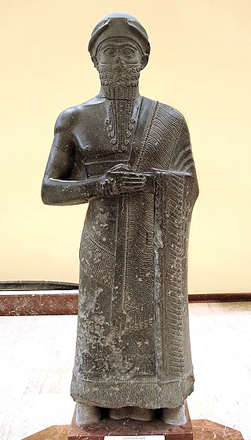AMMAN – One of the main problems that historians and archaeologists specialised in the Bronze Age face is the lack of concrete historical evidence. We are going to talk about the Middle Bronze Age (ca. 1,900 – 1,800 BC) —the period during which Amorite dynasties were founded.
After 1,750 BC the political influence of Amorite states expended from the northern Levant to the northern Mesopotamia.
"These kingdoms include Yamæad [centred on ancient Ealab] and Qatna in the northern Levant as well as Assyria and Mari in Mesopotamia. While limited references are also made to Ugarit, Byblos and Hazor, only the military affairs of the largest kingdoms, Yamæad and Qatna, are related in any detail in the Mari texts," underlined the professor Aaron Burke.
That period was marked by rivalries between Babylonian states and Assyria (1750-1719 BC).
Archaeological evidence indicates, that Kültepe-Kaneš was destroyed, presumably by the Assyrian king Puzur-Assur during the 18th century BC.
Its destruction brought to an end the Level II settlement of the karum, though the evidence for the destruction of the mound is less certain, Burke noted, adding that if Assyria is correctly identified as the aggressor, then the campaign covered at least 840 kilometres in one direction to achieve its objective. Unfortunately, the campaign of Puzur-Assur would seem to be the only Assyrian campaign before the reign of Samsi-Adad I.
"After several decades of abandonment, Kanes was resettled and flourished before it was again destroyed during the second half of the 18th century BC," Burke said, adding that events during the reign of Yaædun-Lim king of Mari (ca. 1,724–1,714 BC), to whom Margueron attributes renovation of Mari’s fortifications. They indicate that Mari was engaged in a struggle for supremacy with the kingdom of Yamæad, that Mari probably carried out a campaign to the Mediterranean, and that it engaged in battle in the same year with a coalition of rulers from the middle Euphrates Valley led by Yamæad.
The defeat of Mari by Samsi-Adad in 1,685 BC probably contributed to efforts by Sumu‘epuh, the first attested ruler of Yamæad, to consolidate power over an area that may have stretched from the Orontes River on the west, to the Euphrates on the east, and to the border with the kingdom of Qatna on the south, Burke elaborated, adding that the expansion to the east by Yamæad in this period was quickly checked by Samsi-Adad, who installed his son, Yasmaæ-Adad, on Mari’s throne to replace Yaædun-Lim’s son Sumuyamam.
This inevitably led to hostilities between Šamši-Adad and the kingdom of Yamæad. Šamši-Adad is recorded thereafter, probably feeling that his rear was secure, to have ventured to the “Great Sea” and the land of “Laban”, possibly through Yamæad’s territory.
The coalition between Samsi-Adad and Qatna was formed to check Yamæad.
The clear buttressing of the wall’s defences at both of these settlements with the addition of towers and bastions would seem to be a clear sign that political and military circumstances necessitated the renovation of their fortifications.
"Perhaps because Sumu‘epuh conducted raids against settlements in the northern part of the kingdom of Qatna, Samsi-Adad dispatched troops from Mari to Qatna for its defence," Burke stressed.
The conflict during Yarim-Lim I’s rule (1,685–1,669 BC) proved that kingdoms that were not direct neighbours waged wars against each other.
"The conflict between the rulers of Yamæad and Samsi-Adad was ultimately resolved only with Samsi-Adad’s death in 16,80 BC, leaving only five major kingdoms: Yamæad, Qatna, Babylon, Larsa and Esnunna. It was perhaps during this period, beginning with Yaædun-Lim and followed shortly afterward by Samsi-Adad, when non-Levantine powers sought to assert their influence in the northern Levant, that it is appropriate to set the start of the Rectilinear Phase of fortification construction," Burke underlined.
Fortified sites with rectilinear plans in the southern Levant such as at Yavneh-Yam, Timnah, Haror, ‘Ajjul, Ekron, Nagila, Jemmeh, and Masos, can also be understood within the context of a common regional strategy, which was adapted to the defensive concerns of the period, Burke underscored.
